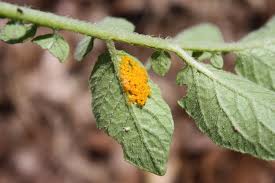I have a new obsession that I foresee lasting the entire summer and beyond. That, my friend, is cooking out with wood. I don’t know if it’s the fire, the fuel, or the flavor. Probably it’s a combination of all three. And with my clone child at my side, showing the same enthusiasm, I know I’m not the only one mesmerized by the magic.
My family has only cooked out over campfires. Part of this is because we never wanted to spend the money on a grill, charcoal can’t be good for you, and the stereotypical griller at my house is from the north where summer is set at a more humane temperature; why grill out in central Virginia where the cook would also feel fried by the end of the session?
So enter the free grill from a friend who moved, a recent reading of a friend’s blog about cooking with wood, several internet searches to find out what’s what, including these: http://www.bbqdan.com/grilling/wood_for_grilling.html and http://woodforcooking.com/wood-cooking-for-beginners/ and seven oak trees that drop enough fuel for the fire. Why put this on your garden blog, you ask? Because it’s about harvesting, learning, and delicious food.
First the harvest: I learned that oak, cherry, and grapevines are great wood for grilling. Fortunately, I have all those in abundance. After garden work this weekend, I spent time finding fallen limbs and kindling. I brought out my son to help, and taught him how to identify the wood. I also explained to him why certain woods, like pine, should not be used. Typically for camping we bring our own wood, so foraging has never been a skill he’s needed.
 |
| ha-WAAAA! |
And this is where the learning comes in. Having a sidekick is great because I have an opportunity to utter what I’m learning aloud for the first time. Plus, he’s figuring things out and teaching me. We have a two fire system going – the actual grill fire and the side patio fire pit, which it turns out, is giving us better coals. He realized that the larger pieces work better in the fire pit, saving us time and flare-ups. Plus, as an official expert marshmallow roaster (according to Sophie from his class), he knows what kind of coals to look for. As a side benefit, this kid likes to chop wood. Clean swipes through thick tree limbs feel pretty good to an 11 year old.
And the taste….having had steaks cooked on a gas grill Friday night at a friend’s to wood grilled chicken at home on Saturday night presented a world of difference. Even the resident vegetarian noticed an improvement in his veggie burger. Other delicious fare has included sausage, corn in the husks, pineapple, and of course, marshmallows. Near future plans include lamb burgers over grapevine coals, skewered tomatoes with mushroom, doughboys, and grilled potatoes. Cooking that requires so much prep time seems to demand a quality taste menu.
 |
| MMMM!!!! |
Oh, and one thing I realized while shooting the smoky breeze with my son – grill time also provides ample opportunities for relaxation and camaraderie. Something about the fire is primal, and brings about a deep appreciation for the food, the process, and the people who take the time to fix it. As my son learned, “instant gourmet” is an oxymoron. Slow cooked savory delights are what it’s all about.
 |
| Accept no substitutes.... |



















